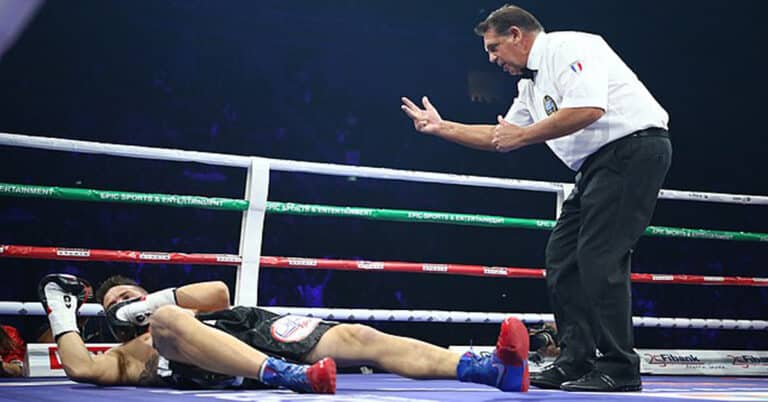Boxing Fundamentals: Understanding The Boxing Punch Number System

Guest post by Evolve MMA, Asia’s premier championship brand for martial arts with the most number of World Champions on the planet. Named as the #1 ranked martial arts organization in Asia by CNN, Yahoo! Sports, FOX Sports, and more, Evolve MMA is the best gym to learn Boxing in Singapore.
Boxing is arguably the most developed fighting system in the world, thanks to the billions of dollars it generates globally yearly. With so much money on the line, even governments like Fidel Castro’s administration have committed significant funds to refine the sport in an attempt to make their fighters the best worldwide.
Boxing involves a lot more than simply throwing punches at an opponent in hopes of landing something significant before they do. It’s a sweet science that takes years to master.
The Punch Number System Used In Boxing
Boxing uses a simple number system to name punches. Doing this makes it easier to teach techniques and combinations. For example, telling a fighter to throw a hook doesn’t paint the entire picture of what you want them to do since there’s a lead and rear hook used in boxing. To make things even more complicated, the stance of the boxer you’re instructing means their lead and rear hook could be either hand based on their stance. Your rear hook is your right hand if you’re in an orthodox stance, while it’s your left hand in a southpaw stance.
The number system allows trainers to let fighters know what they want from them regardless of their stance.
Here’s the number system used in boxing:
- Jab
- Cross
- Lead hook
- Rear hook
- Lead uppercut
- Rear uppercut
While there are six punches listed in the boxing punch number system, there are only four main types of punches used in boxing: the jab, cross, hook, and uppercut. The six-punch number system covers all these punches and designates which hand the attack is thrown with.
The punch number system was developed based on an orthodox stance: all even-numbered punches are thrown with the right hand, while odd-numbered punches are thrown with the left hand. Boxing classes typically use the punch count system to identify the punches thrown during drills. Some of the more basic combinations used in boxing include:
- 1-2 = Jab – Cross
- 3-4 = Lead hook – Rear hook
- 5-6 = Lead uppercut – Rear uppercut
Beginner boxers should memorize the six-punch number system to help them understand their instructor’s commands when performing drills. Now that we have a basic understanding of how the punch number system used in boxing works, let’s take a look at the main punches used in boxing and how they’re thrown.
1) The Jab
The jab is the first punch on the six-punch number system, and it’s the most frequently used punch in boxing. It’s the safest weapon you have since it doesn’t leave any significant openings in your defense when thrown properly.
The jab is typically used as a range finder, and it’s also used to set up combinations. There are many variations of the jab, but the main gist behind it is that it’s a straight punch thrown with your lead hand.
Here’s how to throw a proper jab:
- Get into your fighting stance with your hands in the guard position.
- Extend your lead hand forward while keeping your fist aligned with its starting point. You don’t want your hand to move up or down. You want to keep your fist at the same level it was while in your guard. This increases the speed of the punch and makes it easier to bring your hand back to your guard.
- Quickly return your hand to your guard after throwing the punch to protect against potential counters.
- Once you get the form down, practice throwing your jab as fast as possible.
2) The Cross
The cross is your second straight punch, but it’s a lot more powerful than your jab since it’s thrown with your rear (strong) hand. It’s the second safest punch in your arsenal, and it’s also a ranged weapon. A powerful cross lands with enough power to put opponents away.
Here’s how to throw a cross:
- Get into your boxing stance with your lead hand slightly in front of your chin and your rear hand next to it.
- Pivot on your back foot and rotate your hips, and extend your arms toward your opponent.
- Once you’ve made contact, rotate your torso back to the starting position and bring your hand back to your face.
3) Lead Hook
The lead hook is one of your more powerful punches. It generates power from your legs and torso and can be used at middle to inside range. It’s one of the trickier power punches to learn since you throw the punch with your weak hand. Practice it often, so the technique feels natural to you.
To perform a lead hook:
- Get into your fighting stance with your hands in the guard position.
- Pivot off your lead foot and rotate your body as you throw the punch.
- Keep your elbow bent at a 90-degree angle while throwing the punch on the same plane as your shoulders. Your elbow should maintain the angle as you follow through on the punch.
4) The Rear Hook
The rear hook is the most powerful hook you have, but it doesn’t cover as much distance as the lead hook. It’s a technique that lands with more than enough power to put opponents away. It’s most effective at close distances.
Here’s how you throw a rear hook:
- Start in your boxing stance with your hands up by your face.
- Bring your rear arm to the same height as your shoulders and bend your elbow so your upper and lower arms form a 90-degree angle.
- Pivot on your rear foot and rotate your hips and torso as you throw the punch. Keep your elbow bent at a 90-degree angle until you make contact.
5) The Lead Uppercut
The lead uppercut is another powerful punch for close distances. The punch follows an upward trajectory which makes it harder to block. You use the power from your legs and torso to drive your fists upward into your opponent.
Here’s what the technique looks like:
- Get into your boxing stance.
- Bend your knees to enter a three-quarter squat and drop your lead arm, so it forms a 90-degree angle with your body.
- Use the power generated from your legs to drive your fist into the target while keeping your elbow bent.
6) The Rear Uppercut
The rear uppercut is the most powerful weapon in your arsenal. It works best at close distances when your opponent can’t see your hand below their guard.
To perform a rear uppercut:
- Drop into a three-quarter squat and drop your rear hand, so it forms a 90-degree angle with your body.
- Pivot on your backfoot and rotate at your hips as you drive your fist upward into your target.






